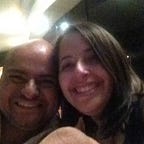Crossing the imaginary chasm: Yay! Questions
(remote edition)
Given the pandemic conditions, a group of agility professionals took on the task of creating a different proposal focused on those people who wanted to know about agility, customer-centered design, and excellent technical practices. Thus was born the Agile Online Open Space was the first Global Open Space in Spanish of 2 continuous days with leaders of agility around the world. It was a space where experiences were shared in an environment of collective knowledge. One of its most relevant characteristics is that it was a “non-stop” event of uninterrupted transmission.
Among its main objectives were to discover new ideas in agile frameworks, innovation, and organizational transformation, share real experiences of adopting applied agility, learn about cases of cultural, digital, and business transformations identifying modern forms of organizational leadership and service
It was a very propitious environment to generate learning given the number of experiments we implemented in technological, economic, and work forms. It was very well received by the attendees, with the additional factor that is an open space. The interaction of these was very intense and if we wanted to organize a new event the feedback would be crucial. We know that Management 3.0 provides wonderful tools for learning. For this reason, we decided to close the event using a yay! questions, through a liberating structure known as ecocycle planning in real-time and remotely with the attendees of the event.
We wanted to get feedback from the participants to make next year's event much better. Our outcome is expected to achieve a better participant-centered AOOS 2021, reinforcing the elements that, for that reason at the end of the event, we invite the participants individually, and in silence, generate a numbered list of activities, situations, and experiences that we provide before and during the event.
During the last hour of the event, we gathered all the attendees and asked them to tell us all the elements that had brought them the most benefits.
Then we asked them to tell us those things that were really great and which could be improved, We encourage the group to put their activities on sticky notes and to create a map of the whole group with the help of miro.co. Finally, we asked them which elements, situations, moments had left relevant learnings and had even exceeded or decreased their expectations
We provide a little explanation about each quadrant of the ecocycle:
Ecocycle planning is a methaphor: “Plants, for example, grow from seeds when they land in fertile ground (incubation). When the ground is fertile enough, seedlings will sprint that in turn depend on sufficient sun, shelter, and minerals to grow (birth). When these conditions have been met, seedlings grow into plants that bear fruits and/or spread new seeds (maturation). But eventually, even mature plants die and are composted to become energy for new plants. Or their removal simply makes place for new seeds to grow (creative destruction)” Liberating Structures
A few minutes later we asked them to place their different observations in each corresponding quadrant of the ecocycle, refining each of the items, and then through the functionality of dot-voting provided by mural selection those they considered most valuable for the next edition
Then we invite them to process the patterns that occurred by placing the activities. Ask them to focus on all the activities where there was consensus on their positioning. We ask them, “What activities do we need to increase or start to move forward?
We got a lot of feedback. With this information, we consider the improvements for the next edition that include the elements with more interest from the attendees.
Yay! questions serve as a catalyst for improvements to generate much more participant-centered designs by linking emotions with needs and expectations. This practice allows us to find a way to generate a space to promote the participatory culture of both customers and employees of an organization. Its ease of use is very positive.
Although there are different methods and each company should find those that best suit their culture and needs, in our case worked very well with liberating structures, where the proposals for improvement came from the same participants of the activity, that is really something very positive
I would like to experience this practice in other formats such as daily Scrum or in more executive meetings since no matter the organizational level everyone, from management to operational staff, can propose improvement actions and carry them out, always focusing on small but continuous improvements, instead of making big changes that could take a lot of time and effort.
